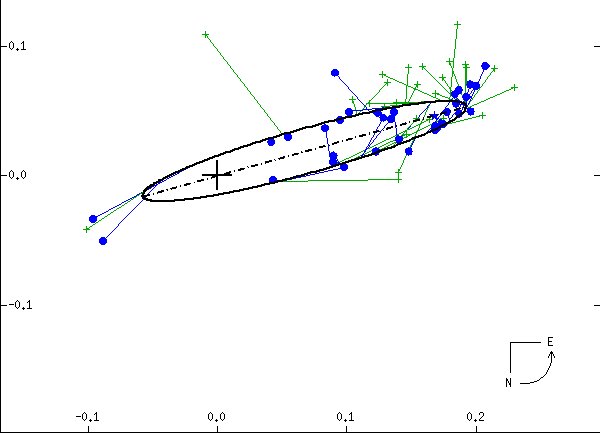
 |
The outer G giant mutually orbits the two inner class A stars of the triple star Psi Sagitarii on aighly eccentric path over a 20-year period, the outer star and the close binary averaging 12 Astronomical Units apart. In spite of the obviously large errors for individual observations, the sum of the masses from Kepler's laws comes out quite reasonably at nearly eight Suns. From the Sixth Catalog of Orbits of Visual Binary Stars , W. I. Hartkopf and B. D. Mason, US Naval Observatory Double Star Catalog, 2006. |